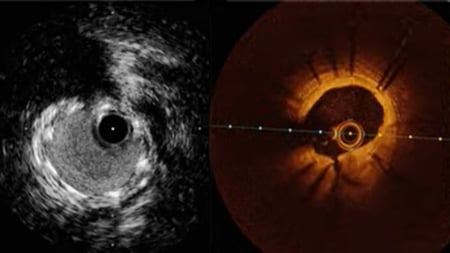10 Jul 2019
Clinical outcomes of state-of-the-art percutaneous coronary revascularisation in patients with three-vessel disease: two-year follow-up of the SYNTAX II study
Selected in EuroIntervention by D. Milasinovic
The 2-year results of the SYNTAX II study seem to primarily underscore the potential to improve patient outcomes by refining the technique and technology of PCI.
References
Authors
Serruys PW, Kogame N, Katagiri Y, Modolo R, Buszman PE, Íñiguez-Romo A, Goicolea J, Hildick-Smith D, Ochala A, Dudek D, Piek JJ, Wykrzykowska JJ, Escaned J, Banning AP, Farooq V, Onuma Y.
Reference
EuroIntervention. 2019 Jun 12;15(3):e244-e252
Published
June 2019
Link
Read the abstractReviewer
My Comment
Why this study – the rationale/objective?
This is a 2-year follow-up of the SYNTAX II study, which compared clinical outcomes of state-of-the-art PCI marked by the routine use of intracoronary physiology and imaging, with the historical results of the SYNTAX I study.
How was it executed – the methodology?
- 454 patients with 3-vessel disease but without a left main disease were included, whose SYNTAX II scores were suggesting equipoise between PCI and CABG regarding 4-year mortality.
- Lesions deemed significant by iFR/FFR were treated with a new generation DES (Synergy), and the stenting result was optimized with the help of IVUS.
- The control group consisted of 643 patients from the SYNTAX I trial whose calculated SYNTAX II score also predicted equipoise between PCI and CABG.
What is the main result?
- The combined endpoint of all-cause death, any stroke, MI, or revascularization (MACCE) was reduced in patients treated with state-of-the-art PCI in the SYNTAX II trial compared with patients treated with PCI in the SYNTAX I trial (13.2% vs. 21.9%, respectively, p=0.001).
- State-of-the-art PCI according to the SYNTAX II standard was also associated with a lower rate of cardiac death (1.4% vs. 3.9%, p=0.025), periprocedural MI (0.2% vs.3.8%, p<0.001), repeat revascularization (10.2% vs. 15.7%, p=0.022) and definite stent thrombosis (0.9% vs. 2.9%, p=0.048).
- SYNTAX II-standard PCI achieved comparable results in terms of 2-year MACCE as CABG from the SYNTAX I trial (13.2% vs. 15.1%, p=0.42).
Critical reading and the relevance for clinical practice
The 2-year results of the SYNTAX II study seem to primarily underscore the potential to improve patient outcomes by refining the technique and technology of PCI. These positive results seem to converge on the already existing randomized data that have signalled the beneficial effects of appropriate lesion selection (the FAME II trial) and IVUS-based stenting optimization (the ULTIMATE trial).
In terms of everyday practice, and given the current guideline recommendations that favour CABG in cases of high anatomical complexity and the presence of diabetes mellitus, it may be important to mention that in the SYNTAX II trial neither anatomic complexity nor diabetes modified the beneficial effects of state-of-the-art PCI.
This being said, a randomized trial with longer-term follow-up may be needed to properly gauge the effects of contemporary PCI with liberal utilization of intracoronary imaging and physiology against CABG.






1 comment
Nice review!